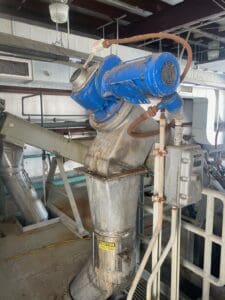Long term Wastewater Facility Planning
 The City views the long term when planning for the Water Reclamation Facility.
The City views the long term when planning for the Water Reclamation Facility.
For many Hailey citizens, wastewater is “out of sight, out of mind.” Not so for the Hailey Wastewater Division - this team makes sure that pollutants such as nitrogen, phosphorus, dissolved chemicals, and solids are removed from the water and disposed of responsibly. Treating wastewater is incredibly hard on equipment. The gritty, aggressive nature of raw sewage causes rapid aging of wastewater infrastructure. Hailey is approaching the end of the expected life cycle of much of the wastewater treatment infrastructure.
The City of Hailey’s Water Reclamation Facility (WRF) was built in 2000. Most facilities last 20 years before they start to experience major problems that could have environmental, public health, and public safety issues. While Hailey is currently meeting our National Pollution Discharge Elimination System (NPDES) permit requirements, aging infrastructure requires renovations to meet state discharge regulations.
Hailey began upgrading our facility with the addition of our Biosolids Program, completed in 2017. Biosolids are the solid organic matter recovered in the wastewater treatment process. The City and Winn’s Compost have been engaged in a pilot program to convert the Biosolids into compost for reuse as a soil amendment. Based on the success of this pilot program, Hailey would like to delve further into reuse and better utilize the precious resource that comes through the WRF – water!
In 2021, Hailey completed the Department of Environmental Quality (DEQ) approved Facility Planning Study which gave the City a guide to updating our WRF. The Facility Planning Study was unanimously adopted by the City Council shortly after its completion. This document presents cutting-edge technological best practices that increase the effectiveness of the treatment process and increase the sustainability of the WRF. One of the most environmentally-conscious strategies is to pursue the highest class of treated water – known as reuse or Class A water. Reuse water can be used for irrigation, reducing the need to apply our limited supply of drinking-quality water on parks. For the city to pursue a high class of water quality and preserve our drinking water source we will need to secure funding for the two highest priority improvements recommended in the Facility Planning Study: Aging Infrastructure-Headworks and Membrane Bio Reactors (MBRs).
The City of Hailey’s Headworks was built in 2000 and had an expected lifespan of 20 years. Headworks is the first step in the wastewater treatment process. Wastewater Division staff are currently mitigating the problems that arise from equipment that has gone past its expected lifespan. The screening of material entering Headworks from the waste stream is less than 45% effective – a new facility would have an efficiency of over 90%. Wastewater staff are putting more and more time into troubleshooting difficulties with the Headworks portion of treatment. Addressing the proper functioning of Headworks is essential to the efficient ongoing operation of the WRF. It is highly important to improve this process to preserve both new and aged equipment downstream in the treatment process. Hailey City Council is bringing this Aging Infrastructure project to Hailey voters in May of 2023.
The second priority project is the installation of Membrane Bio Reactors (MBRs). Hailey currently uses Sequencing Batch Reactors as the secondary method of wastewater treatment. MBRs are a newer, more progressive, and sustainable technology, which have proven to be extremely effective. Most growing WRF’s, like Hailey, are moving to this technology because of its ability to treat the wastewater to a higher quality. With MBR’s, the City has the opportunity to produce reuse-quality water, which could then be applied to City parks, reducing the consumption of drinking quality water. MBR technology would also increase the overall effectiveness of the WRF and increase Hailey’s ability to protect public health, safety and the environment by discharging cleaner water.
